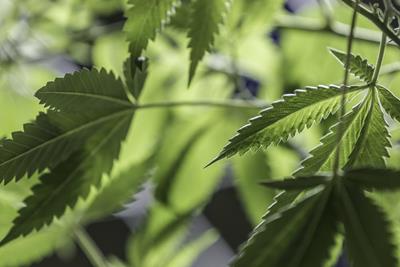
Tuesday November 6, 2018
 Growing
Growing
Dealing with pests in a cannabis grow is no easy task but it is a necessary evil for anyone who wants to produce bountiful marijuana buds. Pests can damage plants so much that they fail to produce flowers, get shocked into turning hermaphroditic (females that produce seeds), or produce buds that are littered with webs and other infestations. Obviously, pests in a cannabis grow are not ideal, which is why it might surprise you to learn that some breeders actually add pests to their cannabis grows.
Beneficial insects (also called “beneficials,” “biological controls,” or “biocontrols”) work hard to protect gardens from the harmful pests that often invade the area. They do this by either praying on harmful pests, using them as a breeding ground for their young or using their bodies as hosts for parasitic activity.
Why Use Predatory Beneficial Insects
There are many reasons to utilize beneficial predators in a cannabis grow beyond the fact that they’re less labor intensive than retroactive pest control measures. One of the most obvious is the fact that beneficial insects provide a chemical-free option to pest control.
Whether synthetic or organic, pesticides leave residue that can be dangerous or unfavorable to consume. Biocontrols do not leave any residue, or any trace of their presence at all for that matter (except possibly a few mummified carcasses from the aphids they’ve overtaken).
Predatory beneficial insects may also improve soil health by providing a living environment in which plants grow. Some pests, like parasitic nematodes, live in the soil where they feast on any harmful pest that finds its way to them. Any pest that spends any point of its life in the soil will likely become victim to the parasitic nematode which will consume the pest and excrete a beneficial bacterium back into the soil. This activity adds nutrients to the soil and aerates it, too!
Beneficial predators are also better for the environment than pesticides. Both synthetic and organic pesticides can run off plants and into water ways which can have a devastating impact on our environment. Beneficial insects reduce the need for these pesticides which can help protect our environment and make cannabis cultivation more sustainable in the long run.

Finally, beneficial predators are incredibly effective when used proactively. Beneficial insects can’t do much to clean up an infestation but will work wonders at preventing them from happening in the first place. Biological controls diligently monitor crops, taking out pests as they find them.
How to Incorporate Beneficial Predators into a Cannabis Grow
Beneficial predators can be purchased at local garden shops or bought online, though they will almost always be sold in a dormant state (often using refrigeration to mimic colder weather that puts them into hibernation). No matter where you source your beneficial insects, be sure to inspect your purchase thoroughly to ensure there is life before releasing them onto your plants.
The application process will vary based on the beneficials being used – some may come in a sachet to be hung in a grow room while others need will be directly applied to the soil, for example – and usually require multiple applications every few weeks or so, especially when used preventatively as their food source would be sparse in young grows.
Types of Beneficial Pests for Cannabis
There are many beneficial predators that can be used in a cannabis grow, each with its own area of focus. Though some target specific pests, others are broader in their approach and thus are more commonly used. Below is a short list of some of the best beneficial predators to use in a cannabis grow houses.
Ladybugs
The most common beneficial used by both novice and experienced growers is the ladybug. A single ladybug can consume around 60 pests per day and about 50,000 in a lifetime with a preference for aphids (though they’ll eat just about anything) so you can imagine how effective a package of more than 1,000 could be.
Parasitic Wasps
Parasitic wasps are great because they attack many different types of garden pests, particularly aphids, by injecting their eggs into their prey. Though some implant their eggs into hosts while the host carries on like normal, others kill their prey immediately. As time passes, the wasp population increases while the number of harmful pests decreases.
Predatory Nematodes
These tiny worms scour the soil as they hunt for any living thing they can grub on. They aren’t picky when it comes to pests they’ll consume making them a great option for all-around pest protection. They also improve soil health which improves nutrient absorption so that flowers can grow big and beautiful with minimal effort for the cultivator.
Mycorrhizae
Speaking of improved soil health, Mycorrhizae are a type of fungi that lives symbiotically in the soil. Mycorrhizae help deliver nutrients to plant roots (in exchange for the root’s sugary discharge) while trapping nematodes in their long, protruding strands.
Praying Mantis
The patient praying mantis is a great option for a cannabis garden because they’ll eat just about everything. Praying mantids are sold as eggs and should be hung near the plants they are to protect. When they hungrily emerge, they will eat whatever pest they find – including each other – and should therefore be separated from one another once they hatch.
When we talk about pest prevention for cannabis plants, we don’t mean to imply that all pests are bad. In fact, some predators can improve growing conditions to help increase yield and reduce a lot of headaches along the way.
Have you tried beneficial insects in your cannabis grow? Tell us what you’ve learned.
Photo Credit: Cannabis Reports (license)









